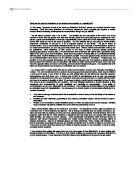Introduction
Communication is the study of the transfer of meaning (Eunson, 2005, p.2). This consists of verbal communication, which is the exchange of ideas through written or spoken words and non – verbal communication, which is conveying a message through cues such as facial expressions (a smile), head movements (shaking left to right), proxemics (closeness in proximity) and eye messages (a stare). It is virtually impossible to not communicate, as further proved by the axiom – “You cannot not communicate”. There can also be considerable misunderstanding due to the noise factors that obstruct easy flow of communication, which can be dismissed if the misconceptions are understood and remedied.
Verbal cues can be easily controlled; where as the non - verbal cues have little or no control as they are exhibited by the speaker more or less without his or her knowledge. These are more spontaneous and the individual has less control over them, thus making it more genuine and real. Consequently, at times when the verbal cues and the non – verbal cues are contradicting, it is the general practice for the listener to perceive the message displayed by the non – verbal cue. In a face to face conversation or verbal exchange, the words take only 7% of the effectiveness of delivering the proper message, where as the tone of voice and non – verbal communication consists of 38% and 55% respectively (Bradbury, 2003).

This is a preview of the whole essay
Peer Reviews
Here's what a star student thought of this essay
Quality of writing
The report states the term 'Communication', however the student gives the Dictionary definition. This shouldn't be included within the report. All technical terms should be explained using their own understanding of the term, to allow the examiner to asses if the student understands the term or not by their own words.
Level of analysis
The report mentions how people's non-verbal cues, such as hand movements are less controllable by speakers. This is quite good, as this describes how people speak. However the report doesn't explained why this is, and the report could include something on the lines of 'A person may not notice their hand movements so much, as this is there 'default' potion, as this is what there feel is comfortable and their natural body moments when talking'. The above will show the examiner, that the student understands how speakers sue non-verbal cues, and the reason to why this occurs.
Response to question
In summary, the report gives a good description of how speakers, may use verbal and non-verbal communication to undertake a successful speak. However, some of the report may need a little further reading's to why it's important. The report describes how different cultures may have different methods of expressing their views. This is quite good, as this acknowledges that there may be some differences in terms of the approach that people may undertake.







